Ultrafast & Terahertz Photonics: Publications
Filter by PI:
Filter by topic:
A Robust Protocol for In Vivo THz Skin Measurements
H. Lindley-Hatcher, A. I Hernandez-Serrano, Q. Sun, J. Wang, J. Cebrian, L. Blasco, E. Pickwell-MacPherson
J Infrared Milli Terahz Waves 40 980 (August 2019) [ pdf ] [ ref ]
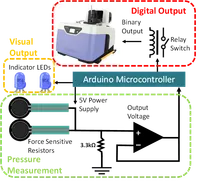 This work presents an experimental setup to control the way in which pressure interferes with the repeatability of in vivo THz skin measurements. By integrating a pressure sensor circuit into our THz system, it is possible to identify which measurements were taken within a previously specified pressure range. The live response of the pressure sensor helps to acquire data within the desired pressure leading to greater consistency of data between measurements. Additionally, a protocol is proposed to help achieve repeatable results and to remove the effects of the natural variation of the skin through the course of the day. This technique has been shown to be able to quantify the changes induced in the skin following the application of a moisturising skin product and shows the measured result to be significantly different from natural skin variation. This research therefore prepares the way for further studies on the effectiveness of different skin products using in vivo THz measurements.
This work presents an experimental setup to control the way in which pressure interferes with the repeatability of in vivo THz skin measurements. By integrating a pressure sensor circuit into our THz system, it is possible to identify which measurements were taken within a previously specified pressure range. The live response of the pressure sensor helps to acquire data within the desired pressure leading to greater consistency of data between measurements. Additionally, a protocol is proposed to help achieve repeatable results and to remove the effects of the natural variation of the skin through the course of the day. This technique has been shown to be able to quantify the changes induced in the skin following the application of a moisturising skin product and shows the measured result to be significantly different from natural skin variation. This research therefore prepares the way for further studies on the effectiveness of different skin products using in vivo THz measurements.
Ionic liquid gated carbon nanotube saturable absorber for switchable pulse generation
Y. Gladush, A. Mkrtchyan, D. Kopylova, A. Ivanenko, B. Nyushkov, S. Kobtsev, A. Kokhanovskiy, A. Khegai, M. Melkumov, M.G. Burdanova, M. Staniforth, J. Lloyd-Hughes and A.G. Nasibulin
Nano Letters 19 5836 (Aug 2019) [ pdf ] [ ref ]
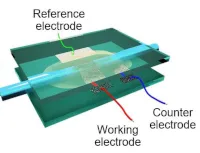 Materials with electrically tunable optical properties offer a wide range of opportunities for photonic applications. The optical properties of the single-walled carbon nanotubes (SWCNTs) can be significantly altered in the near infrared region by means of electrochemical doping. The states’ filling, which is responsible for the optical absorption suppression under doping, also alters the nonlinear optical response of the material. Here, for the first time, we report that the electrochemical doping can tailor the nonlinear optical absorption of SWCNT films and demonstrate its application to control pulsed fiber laser generation. With a pump-probe technique we show that under an applied voltage below 2 V the photo-bleaching of the material can be gradually reduced and even turned to photo-induced absorption. Furthermore, we integrated a carbon nanotube electrochemical cell on a side-polished fiber to tune the absorption saturation and implemented it into the fully polarization-maintaining fiber laser. We show that the pulse generation regime can be reversibly switched between femtosecond mode locking and microsecond Q-switching using different gate voltages. This approach paves the road towards carbon nanotube optical devices with tunable nonlinearity.
Materials with electrically tunable optical properties offer a wide range of opportunities for photonic applications. The optical properties of the single-walled carbon nanotubes (SWCNTs) can be significantly altered in the near infrared region by means of electrochemical doping. The states’ filling, which is responsible for the optical absorption suppression under doping, also alters the nonlinear optical response of the material. Here, for the first time, we report that the electrochemical doping can tailor the nonlinear optical absorption of SWCNT films and demonstrate its application to control pulsed fiber laser generation. With a pump-probe technique we show that under an applied voltage below 2 V the photo-bleaching of the material can be gradually reduced and even turned to photo-induced absorption. Furthermore, we integrated a carbon nanotube electrochemical cell on a side-polished fiber to tune the absorption saturation and implemented it into the fully polarization-maintaining fiber laser. We show that the pulse generation regime can be reversibly switched between femtosecond mode locking and microsecond Q-switching using different gate voltages. This approach paves the road towards carbon nanotube optical devices with tunable nonlinearity.
Scalable interdigitated photoconductive emitters for the electrical modulation of terahertz beams with arbitrary linear polarization
C.D.W. Mosley, M. Staniforth, A. I. Hernandez Serrano, E. Pickwell-MacPherson and J. Lloyd-Hughes
AIP Advances 9, 045323 (Apr 2019) [ pdf ] [ ref ]
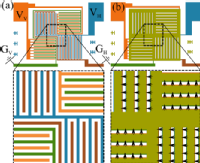 A multi-element interdigitated photoconductive emitter for broadband THz polarization rotation is proposed and experimentally verified. The device consists of separate pixels for the emission of horizontally and vertically polarized THz radiation. The broadband (0.3–5.0 THz) nature of the device is demonstrated, and the polarization angle of the generated far-field THz radiation is shown to be readily controlled by varying the relative bias voltage applied to the horizontally and vertically emitting pixels. The device is scalable in design, and with its simple method of polarization rotation it allows the modulation of the generated THz polarization at rates significantly faster than those achievable in ellipsometry systems based on mechanically rotating components.
A multi-element interdigitated photoconductive emitter for broadband THz polarization rotation is proposed and experimentally verified. The device consists of separate pixels for the emission of horizontally and vertically polarized THz radiation. The broadband (0.3–5.0 THz) nature of the device is demonstrated, and the polarization angle of the generated far-field THz radiation is shown to be readily controlled by varying the relative bias voltage applied to the horizontally and vertically emitting pixels. The device is scalable in design, and with its simple method of polarization rotation it allows the modulation of the generated THz polarization at rates significantly faster than those achievable in ellipsometry systems based on mechanically rotating components.
Utilizing multilayer structures to enhance terahertz characterization of thin films ranging from aqueous solutions to histology slides
Q. Sun, K. Liu, X. Chen, X. Liu, A. I Hernandez-Serrano, E. Pickwell-MacPherson
Optics Letters 44 2149 (April 2019) [ pdf ] [ ref ]
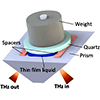 We propose a multilayer geometry to characterize thin-film samples in reflection terahertz time domain spectroscopy. Theory indicates that this geometry has higher sensitivity compared to ordinary transmission or reflection geometries when characterizing both low- and high-absorption samples. Pure water and water–ethanol mixtures are measured to verify the characterization accuracy of the proposed geometry and its capability to measure trace liquids. Paraffin-embedded oral cancer tissue is imaged to further show how the proposed geometry enhances the sensitivity for solid low-absorptive films.
We propose a multilayer geometry to characterize thin-film samples in reflection terahertz time domain spectroscopy. Theory indicates that this geometry has higher sensitivity compared to ordinary transmission or reflection geometries when characterizing both low- and high-absorption samples. Pure water and water–ethanol mixtures are measured to verify the characterization accuracy of the proposed geometry and its capability to measure trace liquids. Paraffin-embedded oral cancer tissue is imaged to further show how the proposed geometry enhances the sensitivity for solid low-absorptive films.
Design and fabrication of 3-D printed conductive polymer structures for THz polarization control
A.I. Hernandez-Serrano, Q. Sun, E.G. Bishop, E.R. Griffiths, C.P. Purssel, S.J. Leigh, J. Lloyd-Hughes and E. Pickwell-MacPherson
Optics Express 27 8 11635 (April 2019) [ pdf ] [ ref ]
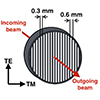
In this paper, we numerically and experimentally demonstrate the inverse polarization effect in three-dimensional (3-D) printed polarizers for the frequency range of 0.5 - 2.7 THz. The polarizers simply consist of 3-D printed strip lines of conductive polylactic acid (CPLA, Proto-Pasta) and do not require a substrate or any further metallic deposition. The experimental and numerical results show that the proposed structure acts as a broadband polarizer between the range of 0.3 THz to 2.7 THz, in which the inverse polarization effect is clearly seen for frequencies above 0.5 THz. In the inverse polarization effect, the transmission of the transverse electric (TE) component exceeds that of the TM component, in contrast to the behavior of a typical wire-grid polarizer. We show how the performance of the polarizers depends on the spacing and thickness of the CPLA structure; extinction ratios higher than 20 dB are achieved. This is the first report using CPLA to fabricate THz polarizers, demonstrating the potential of using conductive polymers to design THz components efficiently and robustly.
Giant negative terahertz photoconductivity in controllably doped carbon nanotube networks
M.G. Burdanova, A.P. Tsapenko, D.A. Satco, R.J. Kashtiban, C.D.W. Mosley, M. Monti, M. Staniforth, J. Sloan, Y. Gladush, A.G. Nasibulin and J. Lloyd-Hughes
ACS Photonics 6 1058 (Mar 2019) [ preprint pdf ] [ supplemental info ] [ ref ]
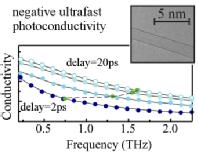 A strong negative photoconductivity was identified in thin film networks of single-walled carbon nanotubes using optical pump, THz probe spectroscopy. The films were controllably doped, using either adsorption doping with different p-type dopant concentrations, or ambipolar doping using an ionic gate. While doping enhanced the THz conductivity and increased the momentum scattering rate, interband photoexcitation lowered the spectral weight and reduced the momentum scattering rate. This negative THz photoconductivity was observed for all doping levels, regardless of the chemical potential, and decayed within a few picoseconds. The strong many-body interactions inherent to these 1D conductors led to trion formation under photoexcitation, lowering the overall conductivity of the carbon nanotube network. The large amplitude of negative THz photoconductivity and the tunability of its recovery time with doping offer promise for spectrally wide-band ultrafast devices including THz detectors, polarizers and modulators.
A strong negative photoconductivity was identified in thin film networks of single-walled carbon nanotubes using optical pump, THz probe spectroscopy. The films were controllably doped, using either adsorption doping with different p-type dopant concentrations, or ambipolar doping using an ionic gate. While doping enhanced the THz conductivity and increased the momentum scattering rate, interband photoexcitation lowered the spectral weight and reduced the momentum scattering rate. This negative THz photoconductivity was observed for all doping levels, regardless of the chemical potential, and decayed within a few picoseconds. The strong many-body interactions inherent to these 1D conductors led to trion formation under photoexcitation, lowering the overall conductivity of the carbon nanotube network. The large amplitude of negative THz photoconductivity and the tunability of its recovery time with doping offer promise for spectrally wide-band ultrafast devices including THz detectors, polarizers and modulators.
